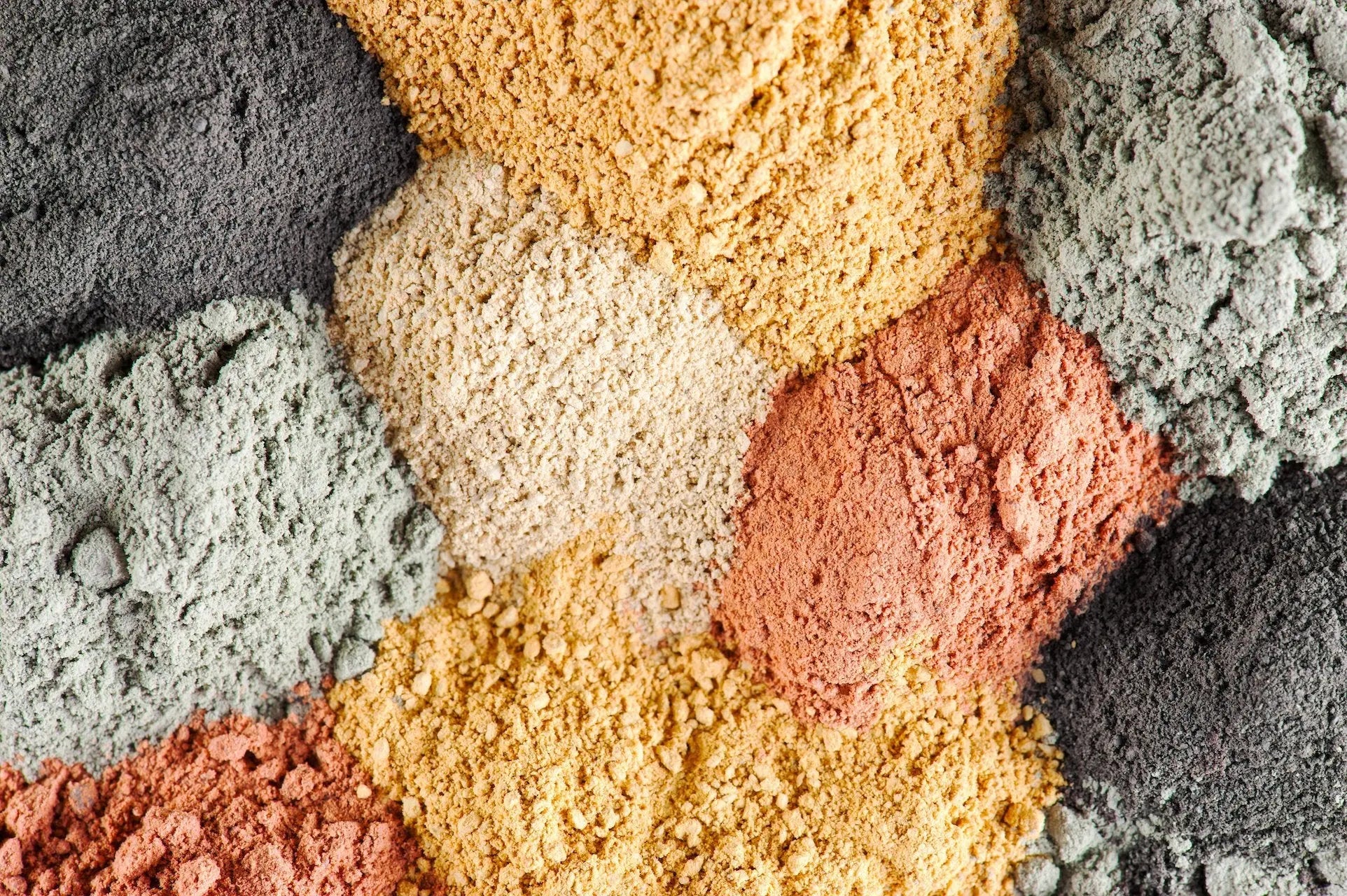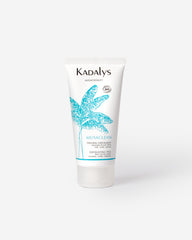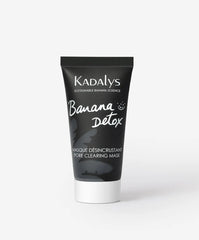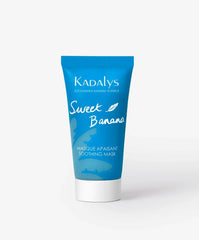
The benefits of clays: from cosmetic virtues to clay therapy
Derived from sedimentary rocks naturally rich in minerals and trace elements, clay has been one of the materials most used by man since ancient times. They are one of the main constituents of soils. Highly appreciated for its detoxifying, balancing and purifying properties, it is found in cosmetics but also in natural therapy because it is extremely effective in treating many ailments. Close-up on this miraculous land with exceptional benefits.
The different types of clays and their application in natural cosmetics
There is not one but "clays". Depending on the climate, humidity and the level of iron oxide in the bedrock, the color of the clay will vary, giving the clay minerals different properties. Thus, each type of clay has its own virtues:
Green clay (montmorillonite or illite): with its high concentration of magnesium and silica (the main constituent of the cells of the epidermis, nails and hair), it is the most active and versatile of all clays. Its purifying, absorbing, anti-inflammatory, balancing and regenerating properties make it very effective in combating imperfections in normal skin with an oily tendency. It is used for its great ability to absorb and regulate excess sebum. Finally, it acts as a healing and purifying dressing on weakened and irritated areas of the skin by limiting bacterial proliferation.
White clay (kaolin): rich in silica but little mineralized, it helps hydrate dry and irritated skin. It has the power to treat irritations, small wounds while having healing and anti-inflammatory properties. It can be used as an anti-aging treatment against wrinkles and is effective in refining the skin texture. In addition, it has softening qualities that promote hydration of the upper layers of the epidermis.
Red clay: rich in trace elements and with the highest iron oxide content, it illuminates the skin to prevent dullness, soothe skin inflammation and improve microcirculation to make the skin soft. It helps to purify the skin, remineralizes it and absorbs toxins. Finally, it has the ability to absorb even very fine impurities, but also odors.
Pink clay: a subtle blend of two clays, white clay and red clay, which allows it to benefit from several virtues. It is suitable for the most sensitive and fragile skin because it respects the pH of the epidermis. Remineralizing, it is well suited to reactive skin. Its antiseptic and healing actions play an astringent, purifier, and accelerator role in the regeneration and reconstruction of damaged tissue.
Yellow clay (yellow illite): rich in magnesium and iron, is used as a treatment that is both stimulating and refreshing. It restores oxygen to the skin, for a toned, luminous and radiant epidermis. It is recommended for sensitive and mature skin. This clay is also endowed with purifying and descaling properties, which will help eliminate toxins. Its sebum-regulating action will help balance the lipid layer on the surface of the face. Yellow clay also has healing and anti-inflammatory properties, applied in a thick layer, it helps to reduce pain.
The cosmetic virtues of clay
Why make a clay mask on the skin?
On a daily basis, pollution suffocates the skin, dehydrates it, accelerates its aging and the lack of oxygen makes it duller. This is why the use of a mask once or twice a week is recommended. This will allow your skin to maintain its youthfulness and be healthier. Face masks will get rid of small imperfections: dull complexion, shiny skin, blackheads, pimples ... Clay masks regulate sebum, cleanse the pores and nourish the epidermis.
To restore the skin to its natural radiance, all clays can be used externally in the form of a mask.
Some tips and precautions for use:
Apply your mask in a thick layer, avoiding the eye and lip area where the skin is more fragile
Be careful never to let the clay dry on your skin
Do not use metal to handle clay, prefer wooden or glass utensils
What about our hair?
Likewise, hair is put to the test in the face of pollution. Dust and microparticles are deposited on your scalp and on your lengths, so they become more fragile, duller and will tend to grease faster. Shampooing too regularly to remedy this can be detrimental to the health of your hair. eveux and make them dry.
A clay hair mask every week, or even once every 15 days, will allow your scalp to be purified, fight against dandruff and regulate the secretion of sebum.
Which clay for which type of hair?
Prefer green clay for oily hair, as it has better absorption capacities than other types of clay. For dry hair, on the other hand, white clay is preferred. Less mineralized, this clay is more suitable for particularly sensitive scalps. On the other hand, if your hair lacks dynamism or volume, this is yellow clay that you can bet on. It will help you regain radiant hair. In addition to eliminating impurities, this very soft clay gives a boost to dull and devitalized hair.
Rich in white and yellow clays, the smooth Musaclean purifying mask works wonders on your skin as well as your hair. Applied as a mask on your scalp, the yellow clay will strengthen and stimulate the growth of your hair, while the white clay will regulate excess sebum.
The therapeutic virtues of clay
Clays are used in natural clay therapy for their therapeutic properties.
External use
They can be used in poultices (more or less thick paste, applied directly to the skin for therapeutic purposes) to relieve muscle pain, heal or revitalize certain organs by contact. The clay also relieves aches, skin irritations, sunburns and minor burns. Applied to an open wound, it cleans it and accelerates its healing.
Internal use
Clays are not only used externally but can indeed have beneficial internal effects on your body.
Consuming clay mixed with spring water, called "clay milk", helps eliminate impurities, toxins or poisons. It helps rebalance the intestinal flora, and strengthens our defenses against harmful microbes. It fills our mineral deficiencies and has a healing action in stomach ulcers.
The oral green clay treatment is recommended once or twice a year, at changes of season, but mainly in the spring to cleanse the body and deal with any deficiencies.











